Abstract
The three major types of augmentative communication for nonverbal persons consist of writing (or typing), pointing, and signing. These alternative response forms are examined in terms of their advantages and disadvantages for establishing effective verbal behavior. In addition, these systems are examined using the concepts from Skinner's (1957) analysis of verbal behavior (i.e., mand, tact, intraverbal, and autoclitic). The results of this analysis show that sign language has the most advantages and the fewest disadvantages, and more closely parallels speech in terms of the verbal operants. Although, the current trend is to favor facilitated communication (typing) and pointing systems, both of these response forms have several disadvantages that impede the development of the verbal operants. It is suggested that for many nonverbal individuals sign language is a better alternative response form, and has a better chance of improving speech.
Full text
PDF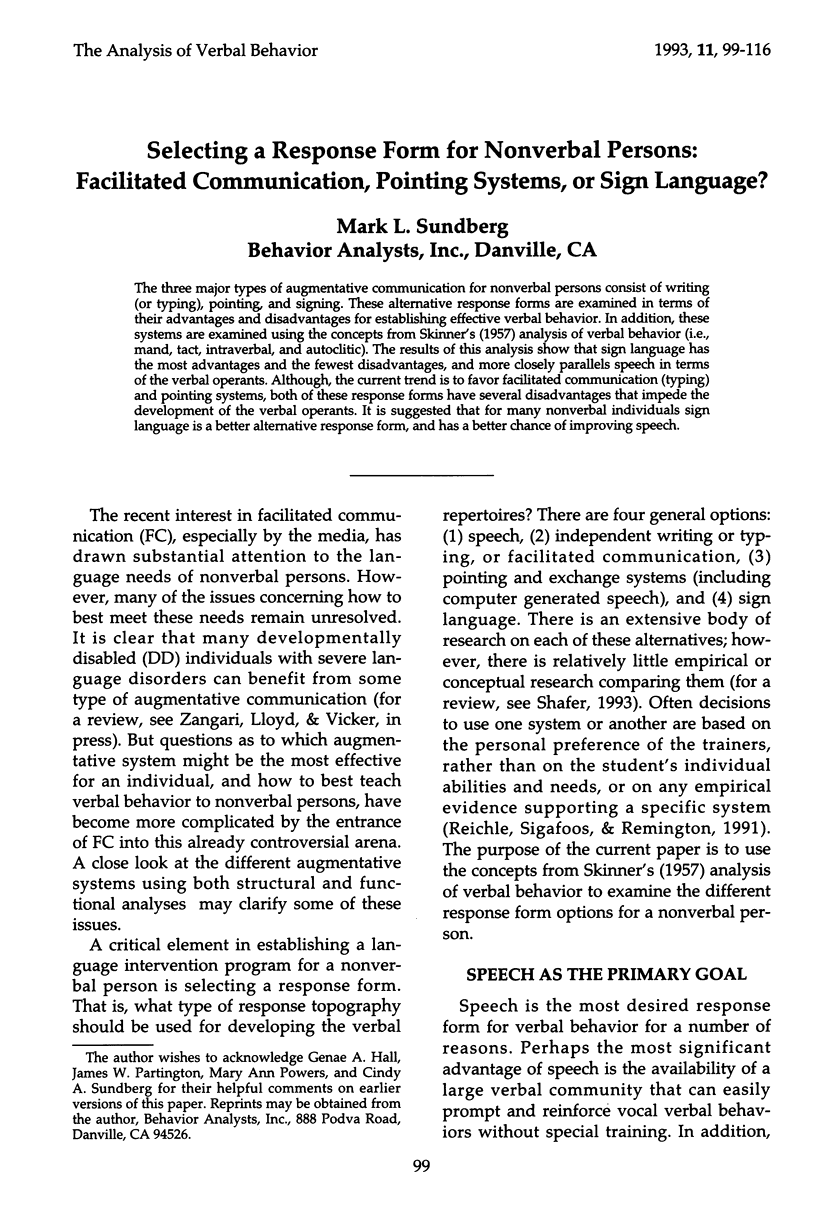
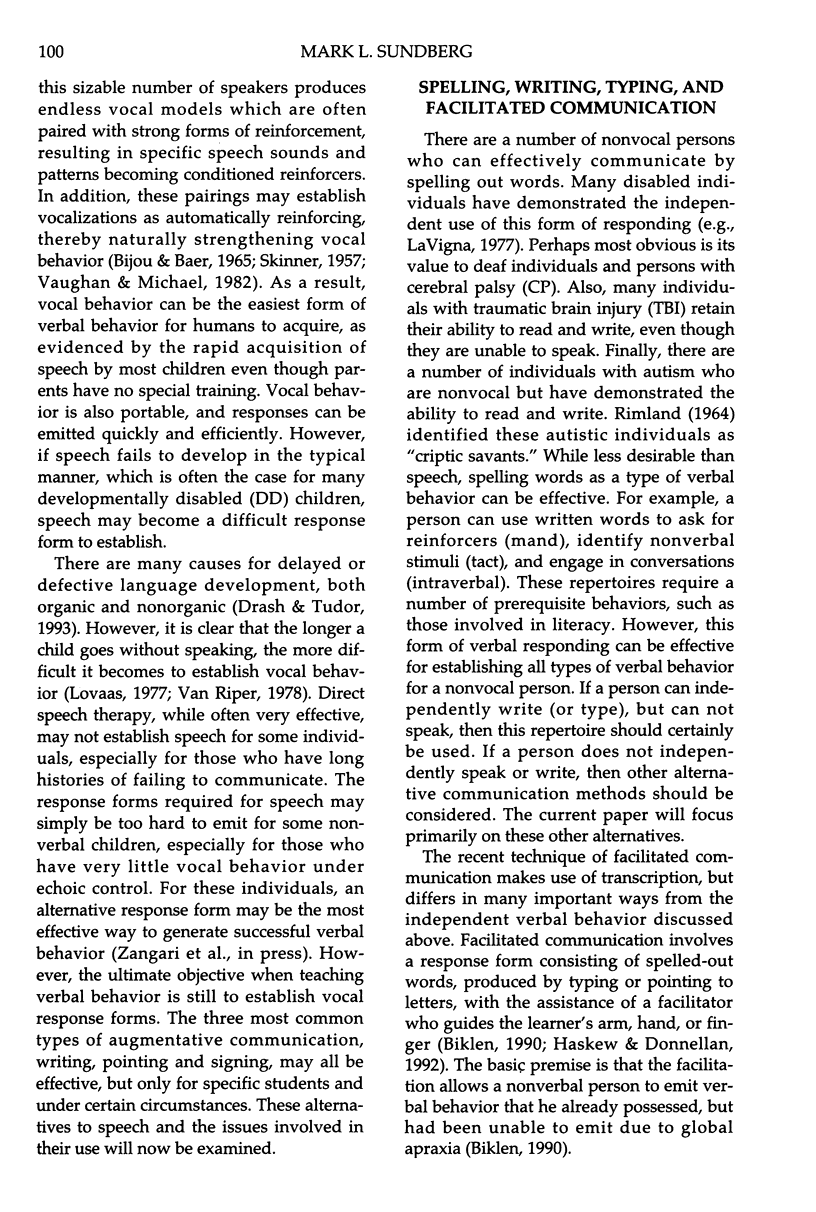
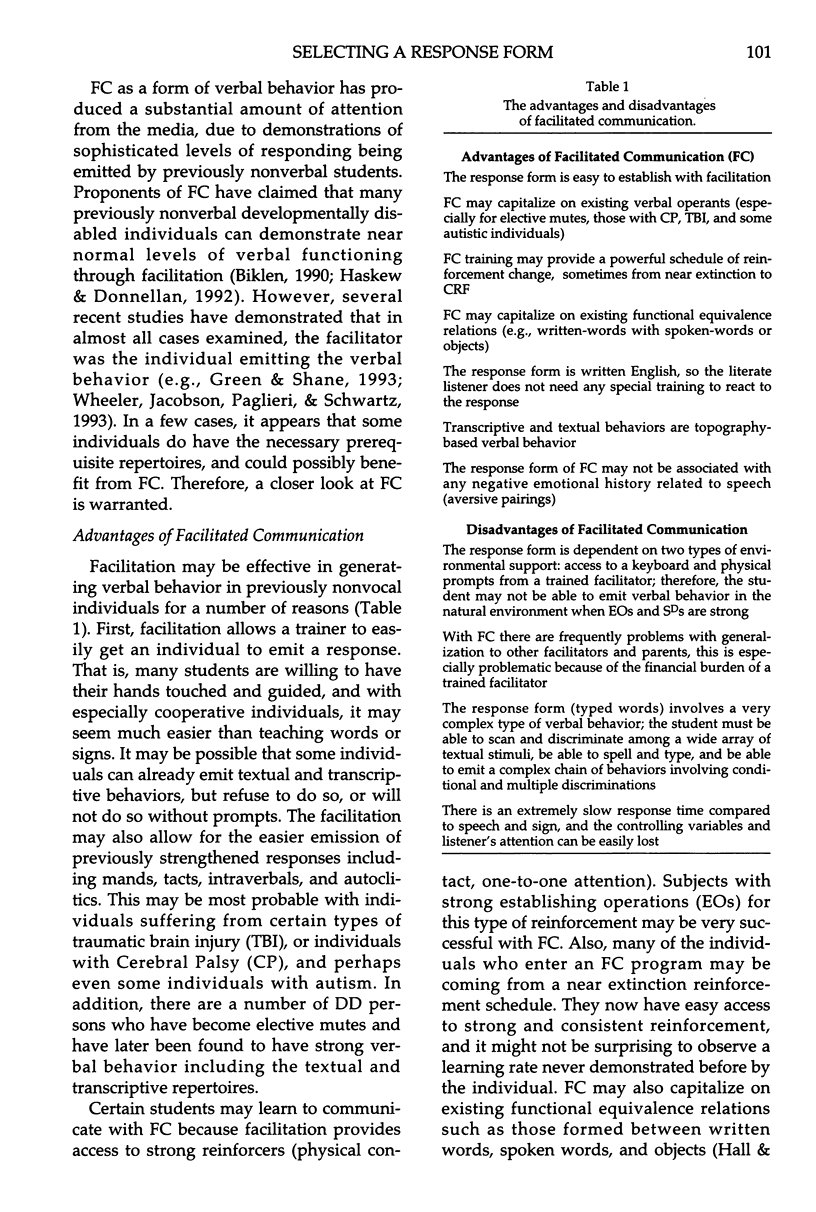
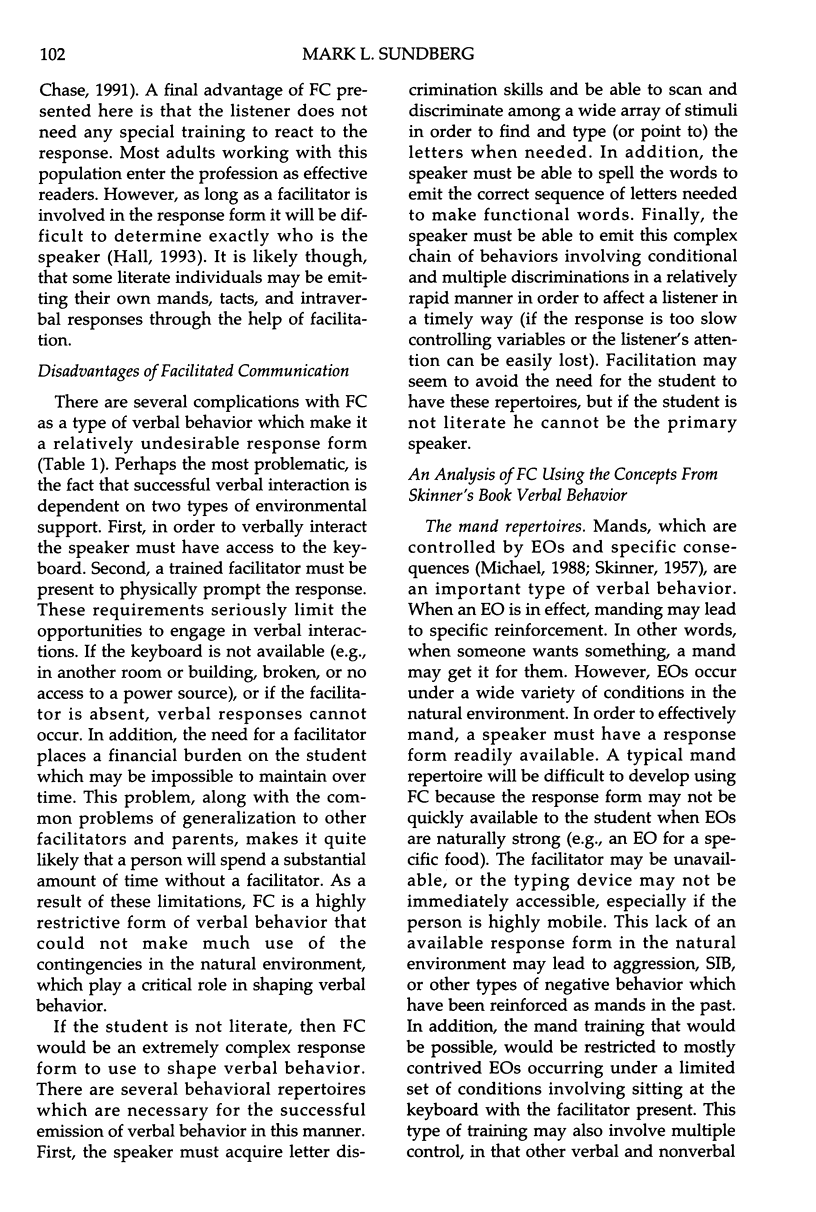
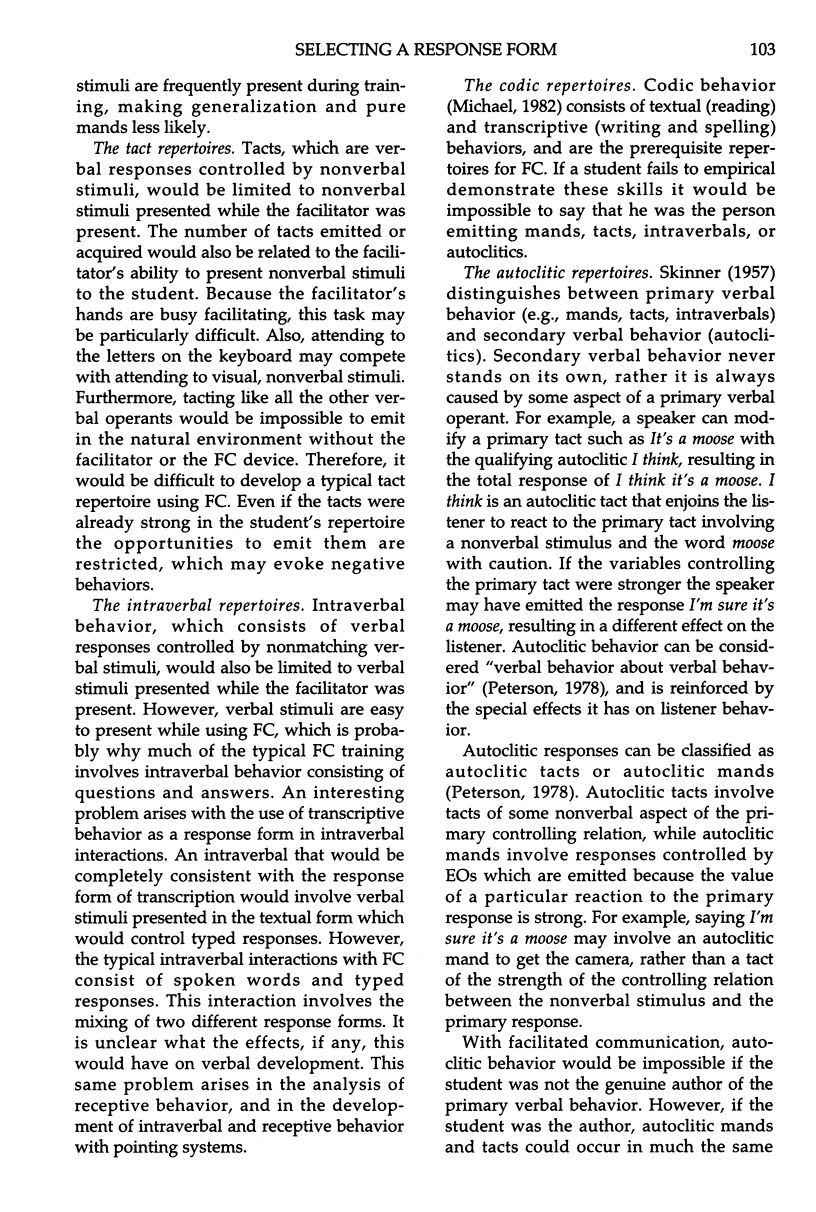
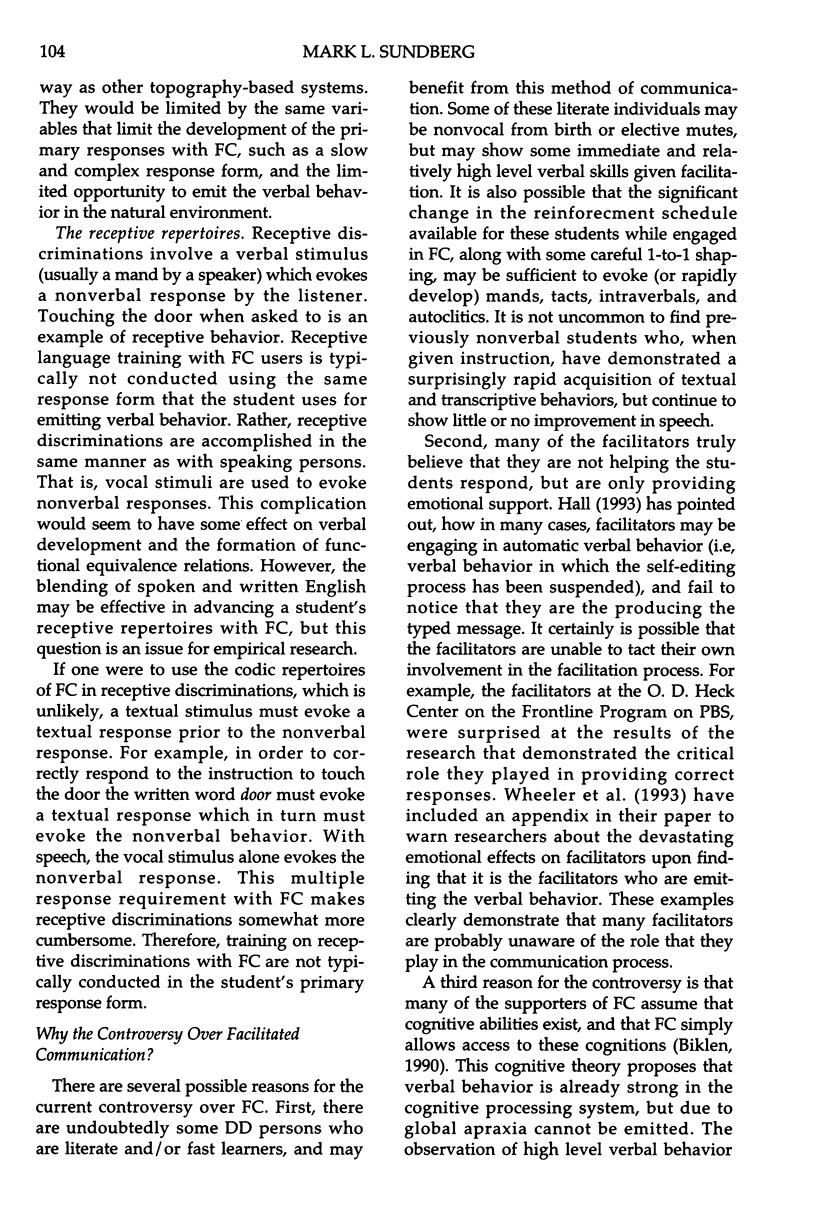
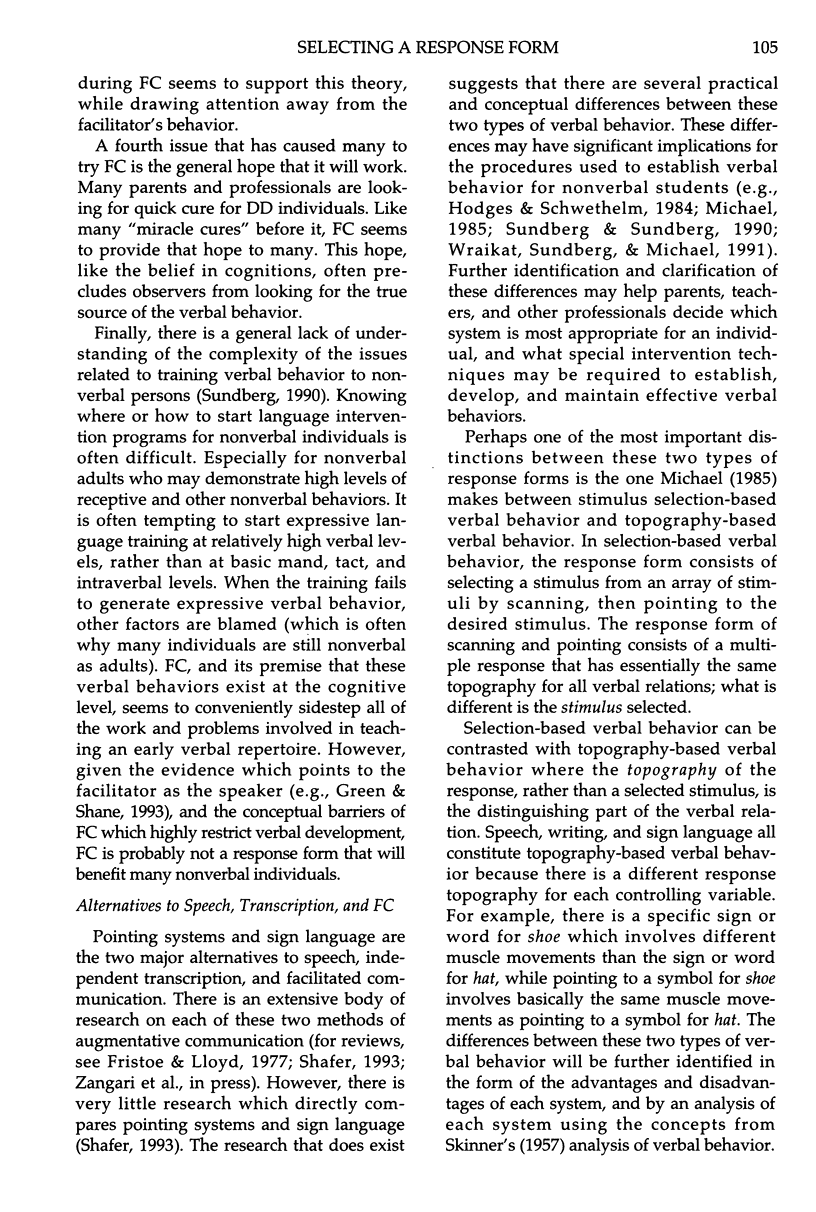
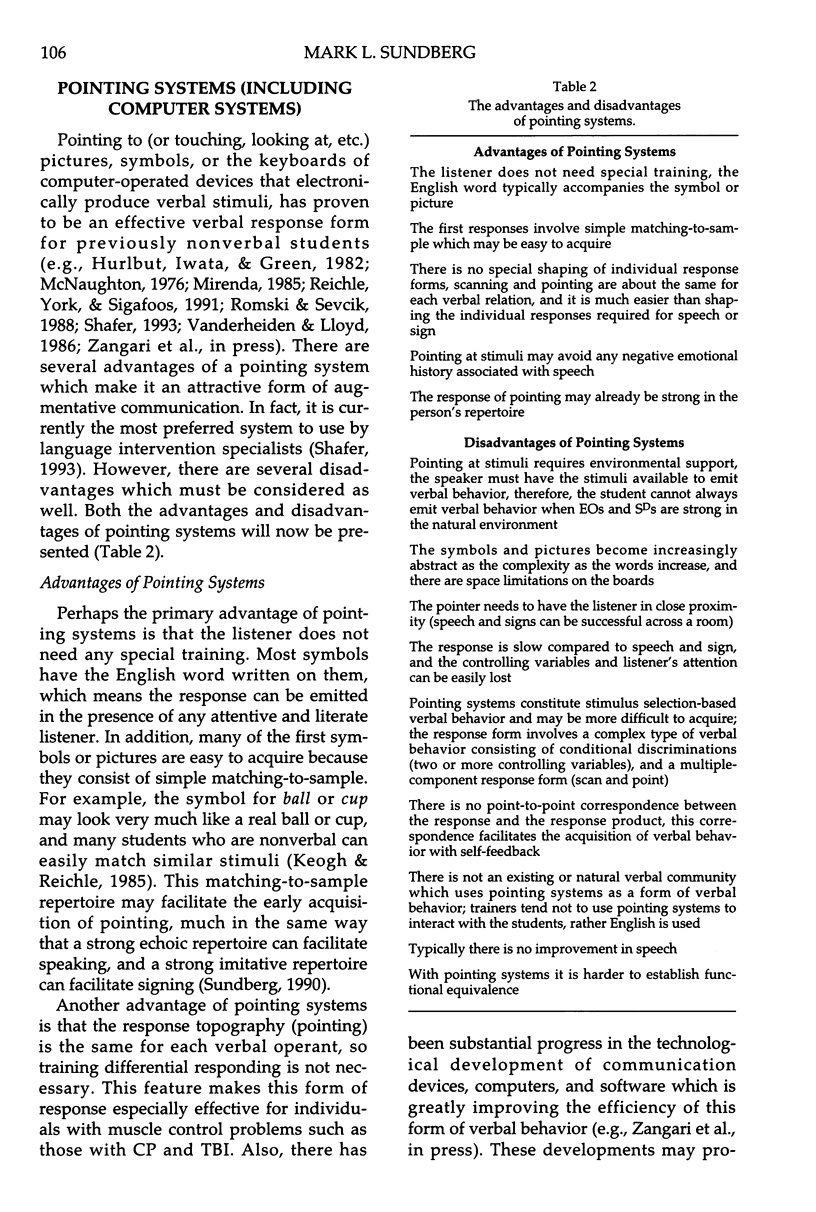
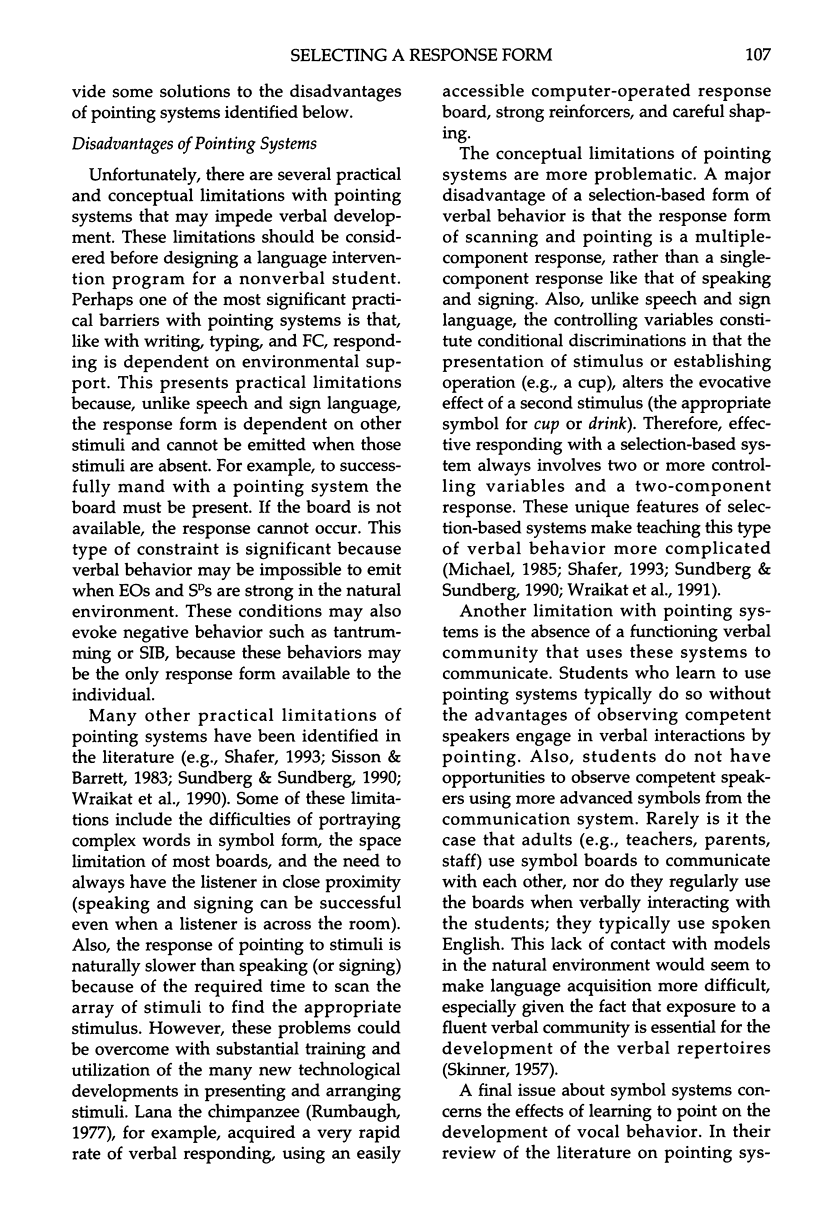
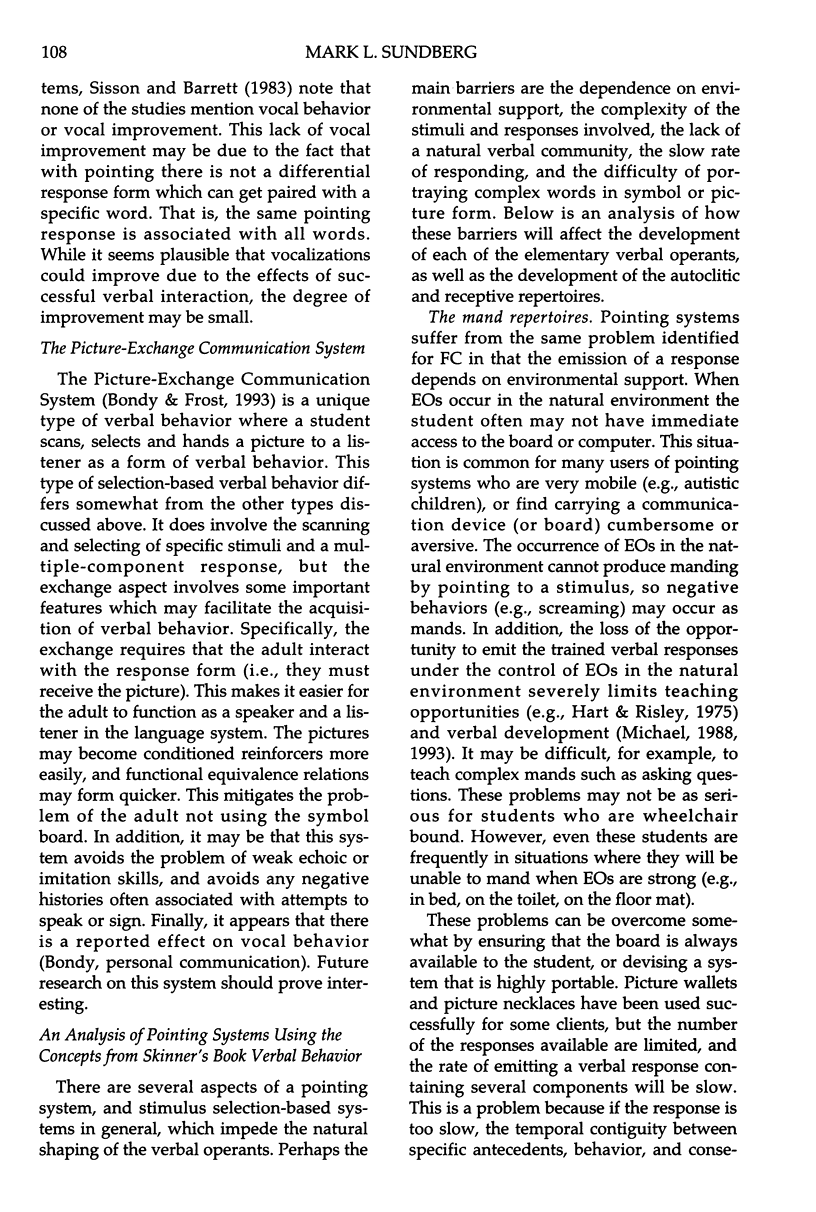
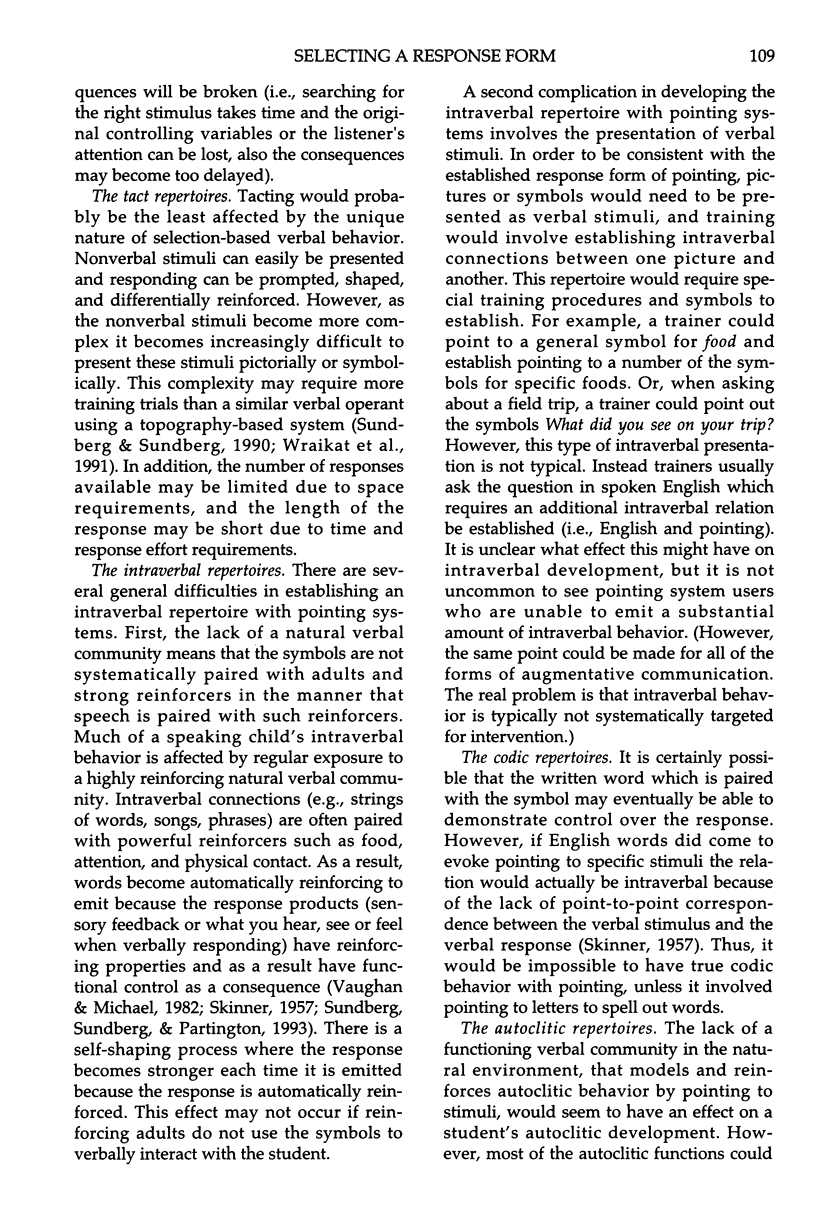
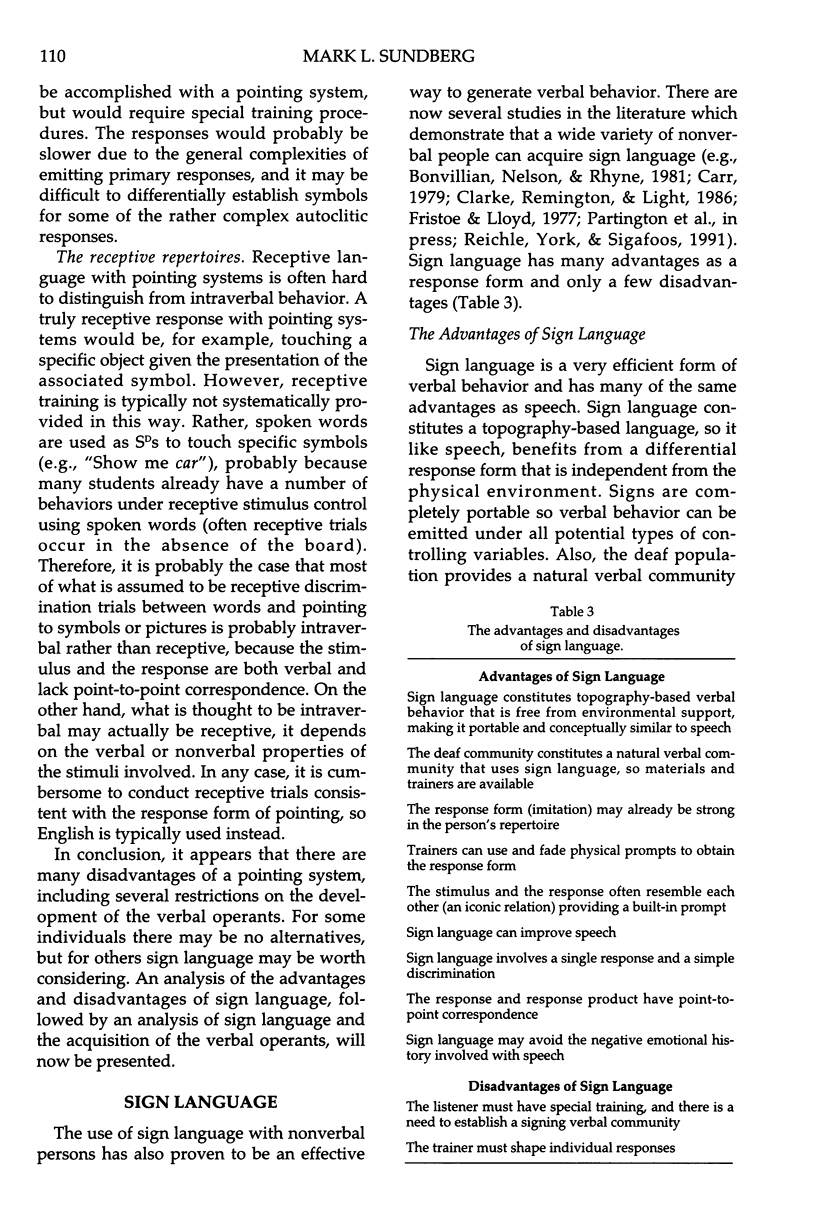
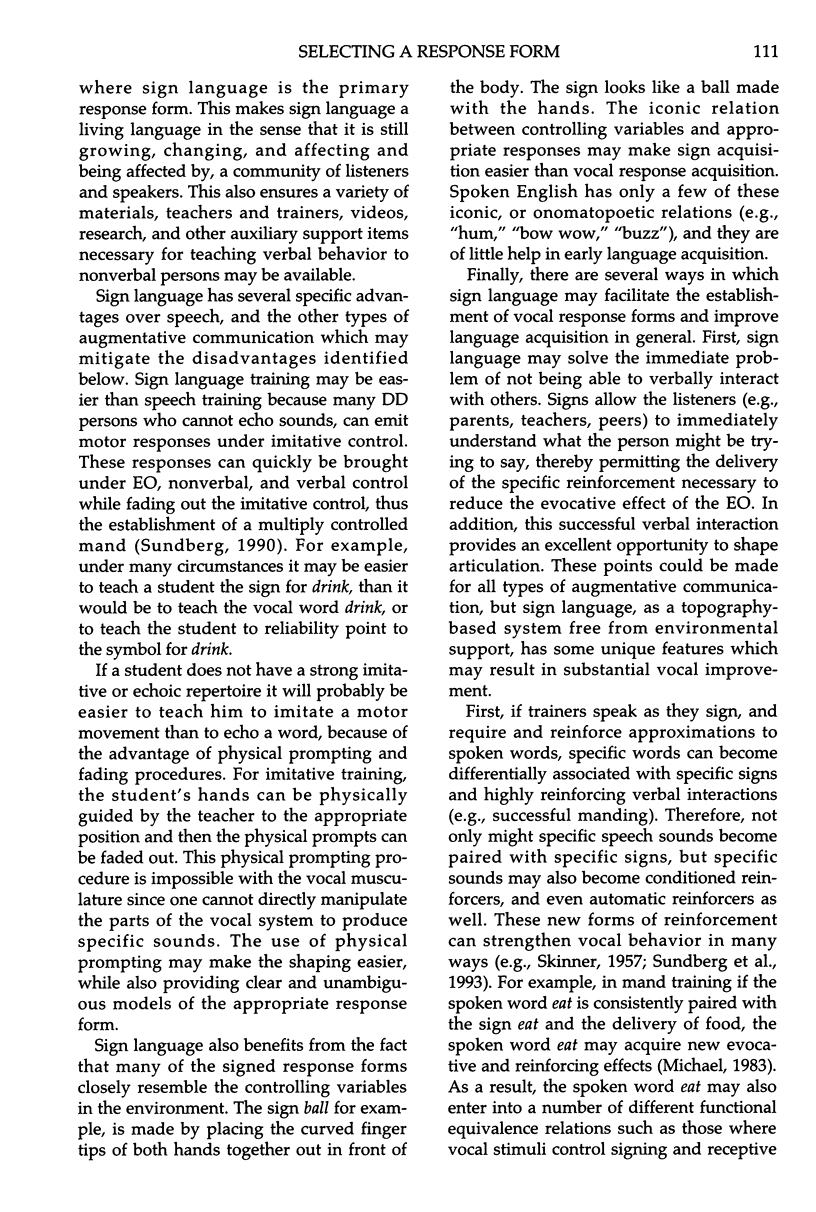
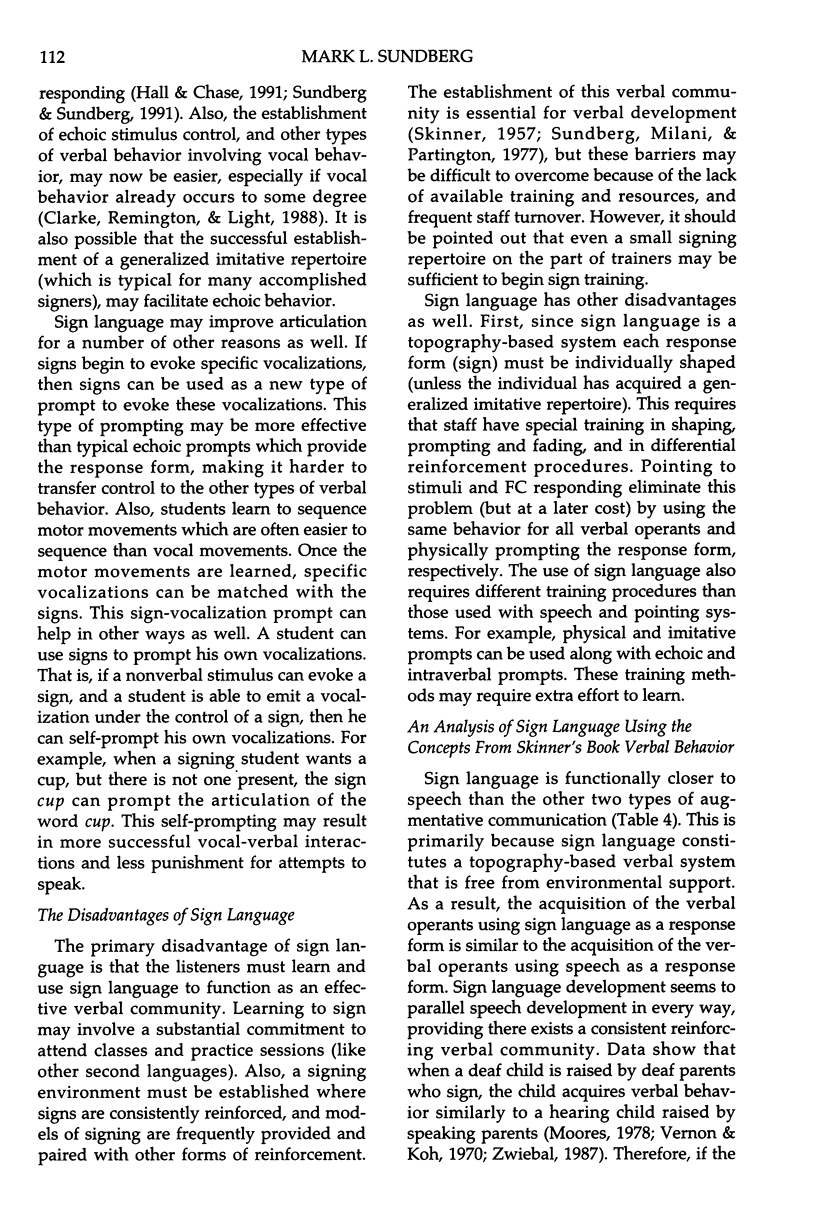
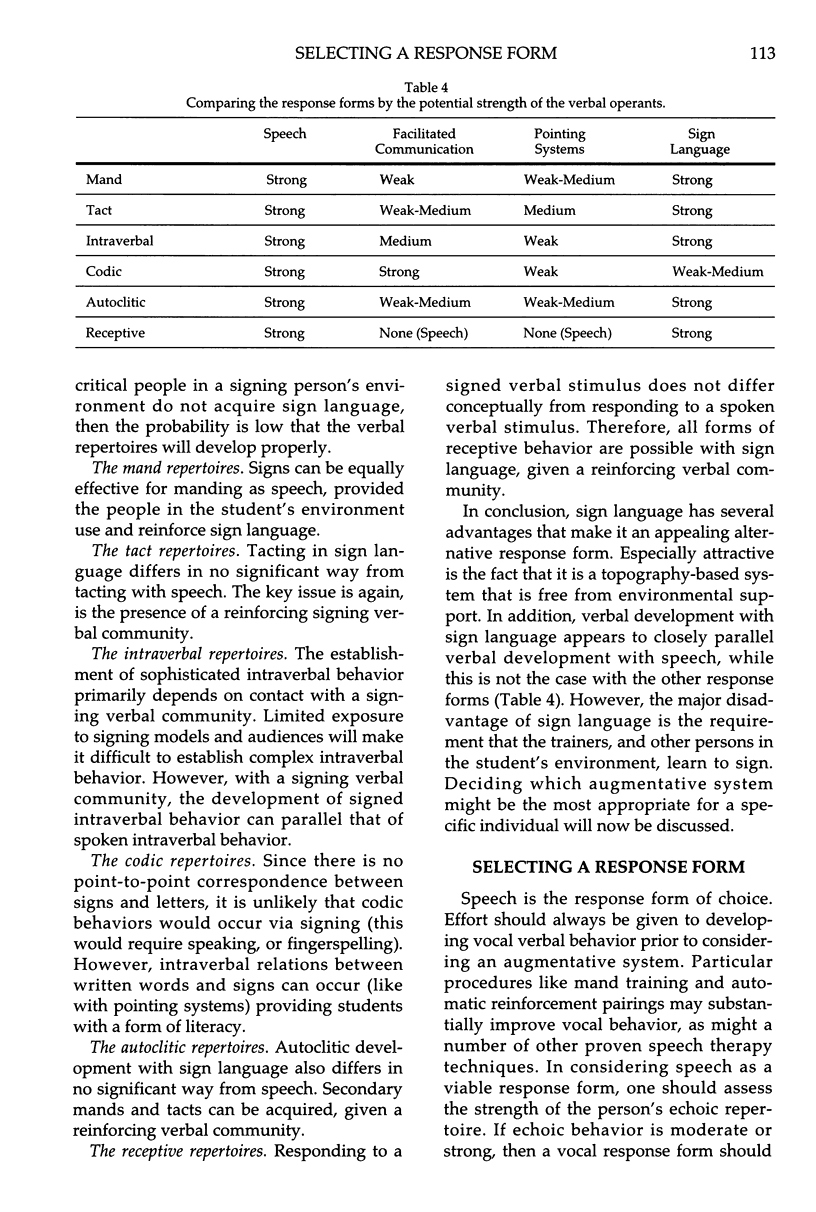
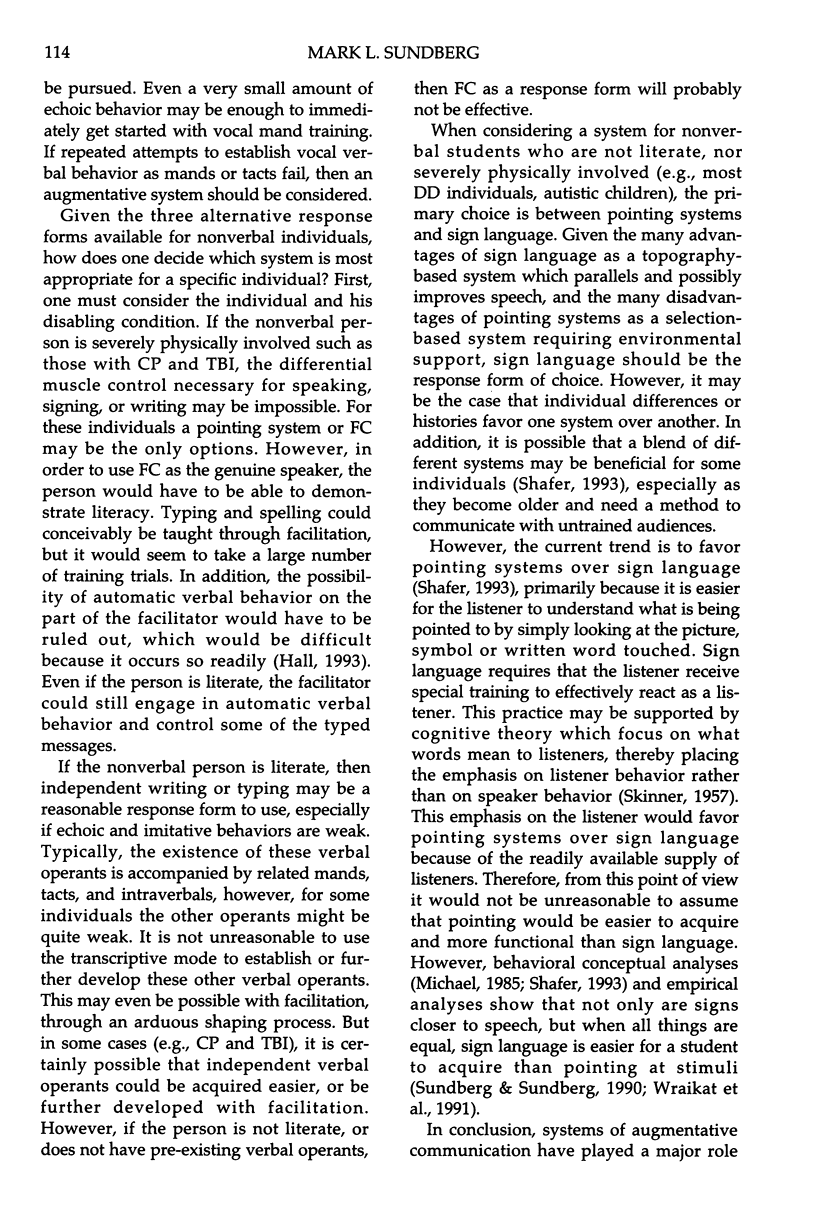
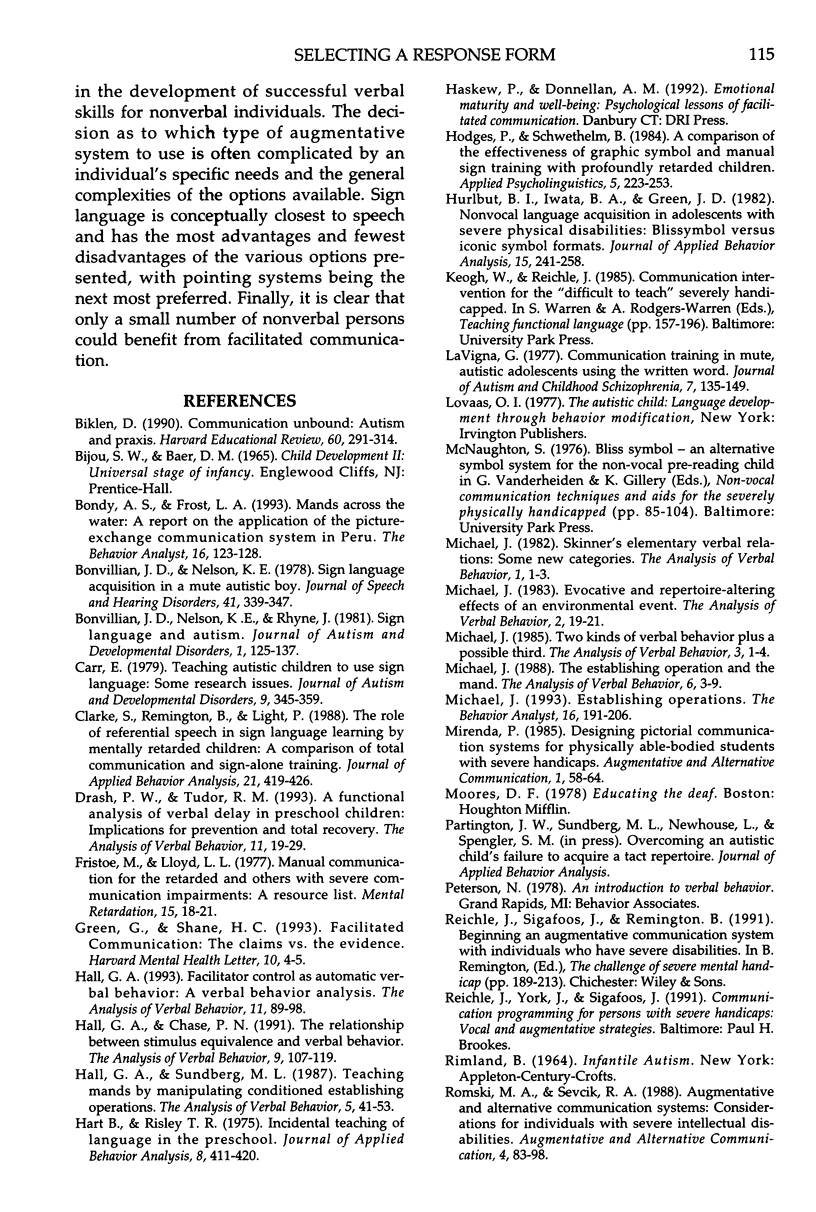
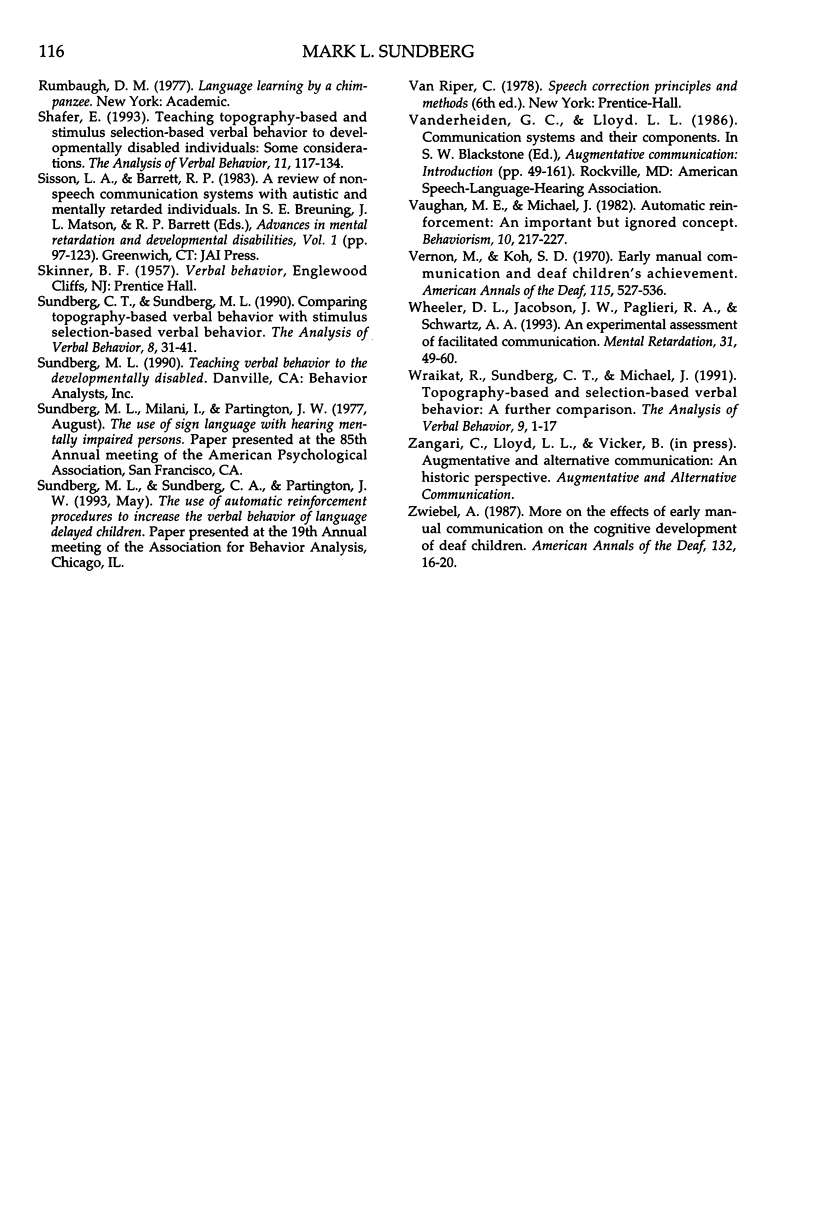
Selected References
These references are in PubMed. This may not be the complete list of references from this article.
- Bondy A. S., Frost L. A. Mands across the water: A report on the application of the picture-exchange communication system in Peru. Behav Anal. 1993 Spring;16(1):123–128. doi: 10.1007/BF03392617. [DOI] [PMC free article] [PubMed] [Google Scholar]
- Bonvillian J. D., Nelson K. E., Rhyne J. M. Sign language and autism. J Autism Dev Disord. 1981 Mar;11(1):125–137. doi: 10.1007/BF01531345. [DOI] [PubMed] [Google Scholar]
- Bonvillian J. D., Nelson K. E. Sign language acquisition in a mute autistic boy. J Speech Hear Disord. 1976 Aug;41(3):339–347. doi: 10.1044/jshd.4103.339. [DOI] [PubMed] [Google Scholar]
- Carr E. G. Teaching autistic children to use sign language: some research issues. J Autism Dev Disord. 1979 Dec;9(4):345–359. doi: 10.1007/BF01531444. [DOI] [PubMed] [Google Scholar]
- Clarke S., Remington B., Light P. The role of referential speech in sign learning by mentally retarded children: a comparison of total communication and sign-alone training. J Appl Behav Anal. 1988 Winter;21(4):419–426. doi: 10.1901/jaba.1988.21-419. [DOI] [PMC free article] [PubMed] [Google Scholar]
- Fristoe M., Lloyd L. L. Manual communication for the retarded and others with severe communication impairment: a resource list. Ment Retard. 1977 Oct;15(5):18–21. [PubMed] [Google Scholar]
- Hart B., Risley T. R. Incidental teaching of language in the preschool. J Appl Behav Anal. 1975 Winter;8(4):411–420. doi: 10.1901/jaba.1975.8-411. [DOI] [PMC free article] [PubMed] [Google Scholar]
- Hurlbut B. I., Iwata B. A., Green J. D. Nonvocal language acquisition in adolescents with severe physical disabilities: Bliss symbol versus iconic stimulus formats. J Appl Behav Anal. 1982 Summer;15(2):241–258. doi: 10.1901/jaba.1982.15-241. [DOI] [PMC free article] [PubMed] [Google Scholar]
- LaVigna G. W. Communication training in mute autistic adolescents using the written work. J Autism Child Schizophr. 1977 Jun;7(2):135–149. doi: 10.1007/BF01537725. [DOI] [PubMed] [Google Scholar]
- Michael J. Establishing operations. Behav Anal. 1993 Fall;16(2):191–206. doi: 10.1007/BF03392623. [DOI] [PMC free article] [PubMed] [Google Scholar]
- Vernon M., Koh S. D. Early manual communication and deaf children's achievement. Am Ann Deaf. 1970 Sep;115(5):527–536. [PubMed] [Google Scholar]
- Wheeler D. L., Jacobson J. W., Paglieri R. A., Schwartz A. A. An experimental assessment of facilitated communication. Ment Retard. 1993 Feb;31(1):49–59. [PubMed] [Google Scholar]
- Zwiebel A. More on the effects of early manual communication on the cognitive development of deaf children. Am Ann Deaf. 1987 Mar;132(1):16–20. doi: 10.1353/aad.2012.0828. [DOI] [PubMed] [Google Scholar]


